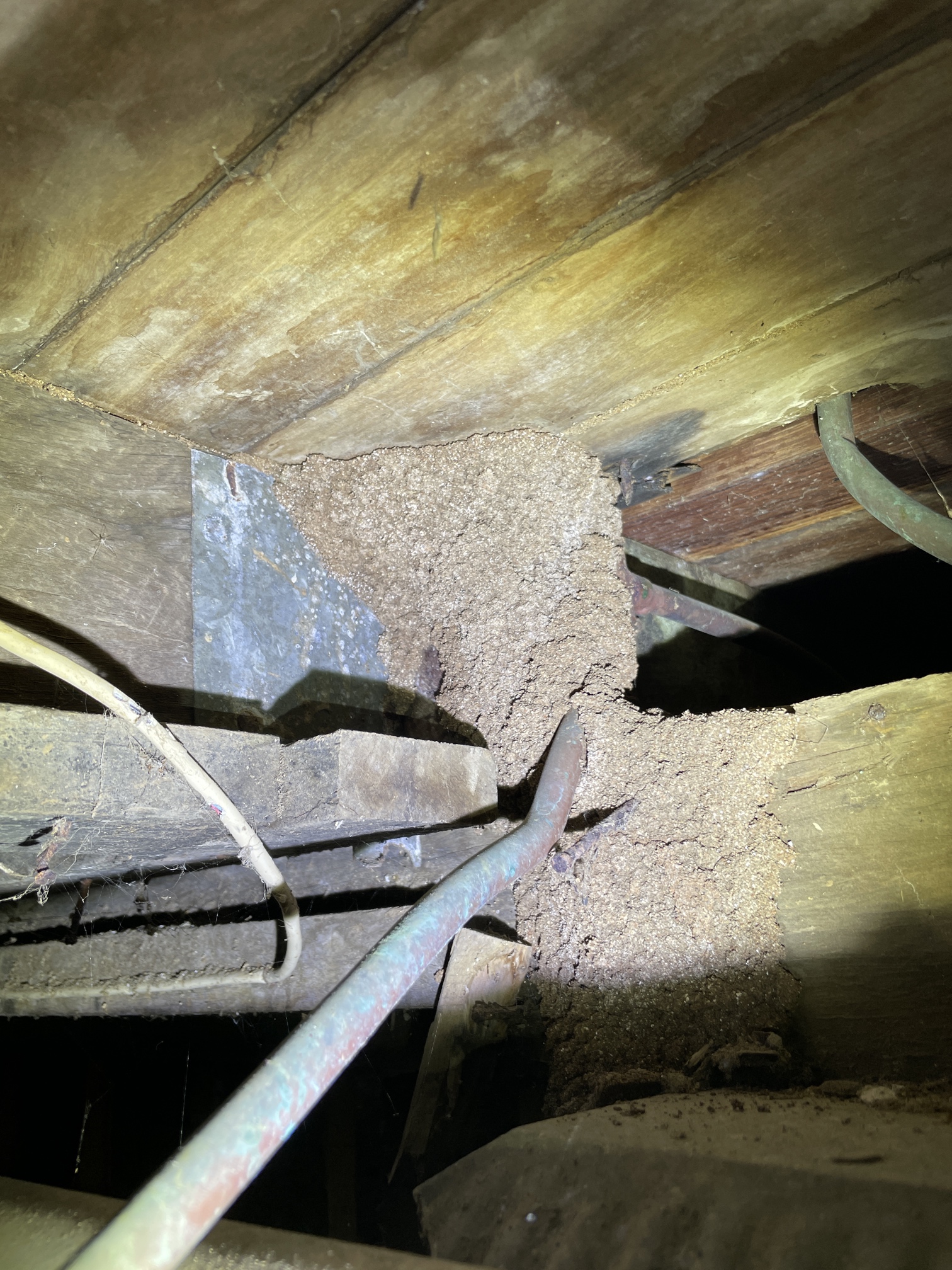We were called out to a house in Ransome, Brisbane, the other day to investigate a damaged window frame in the kitchen. Sure enough, with a bit of poking, the termites reveal themselves. We quickly identified them as Coptoterms by their distinctive"milking".
When this kind of termite feels threatened or is, exposed, the soldiers rush to the breach and extrude a ‘milky’ substance that they squirt towards an enemy.

Coptotermes is not the type of termite you want to find in your house. Their nest can grow to a very large size, meaning there are many mouths to feed: the larger the nest, the more the potential damage.
The point of entry into this structure was pretty evident as the floor was suspended and we could crawl around under the house on the subfloor. This is where we found a termite mud lead coming from the ground and bridging up a concrete stump into the house.

Some facts about Coptotermes:
Coptotermes are found throughout mainland Australia and cause more damage to property than any other type of termite. It is aggressive in its search for food and will attack many items other than wood in its quest for cellulose materials. It will damage wall lining boards, electrical wiring and even personal possessions.
Colonies often nest in Eucalyptus trees or stumps but can form nests inside a structure without ground contact as long as they have access to a constant supply of moisture.
Coptotermes builds its nest at the base of a tree trunk or underground and may form a mound. Subterranean passages extend from the nest up to 50 metres and allow the foraging workers to access other sources of wood to feed. Subsidiary nests (bivouacs) are often built in such places as the cavities in the walls of structures, but only in areas where some moisture exists, perhaps from a leaking pipe or shower.
Where the nest is in a living tree, a central “pipe” of material is eaten out and replaced with workings. Several other trees in the immediate vicinity can be similarly tunnelled, invasion through the living bark. This is in contrast to the initial invasion of a tree by a newly mated pair of reproductives. In the latter case, the invasion is via pre-existing damage to the trunk.

Different castes of Coptotermes. acinaciformis
Several species of termite are found in Australia and they are difficult to distinguish from one another. C. acinaciformis is most likely confused with C. frenchi or C. lacteus. At a length of 5 to 6.5 mm (0.20 to 0.26 in), the soldiers of C. acinaciformis are slightly larger than the other two species. When viewed from above, the soldiers of C. frenchi and C. lacteus have pear-shaped heads, while the heads of C. acinaciformis soldiers are more rectangular.
Termite Life Cycle

Their lifecycle starts with the emergence of winged reproductives from a temporary hole in an established nest. A nuptial flight takes place, and after they have returned to the ground, they shed their wings and search for a suitable place to find their colony. This is usually a piece of rotting wood buried in moist soil or a patch of decay at the base of a tree.
The first eggs laid develop into workers, and only when these are mature enough to take over the care of the young can the queen concentrate on egg-laying, the thing she will do for the rest of her life. Usually, three to five years are needed before the colony is big enough to cause damage to nearby buildings and structures.




